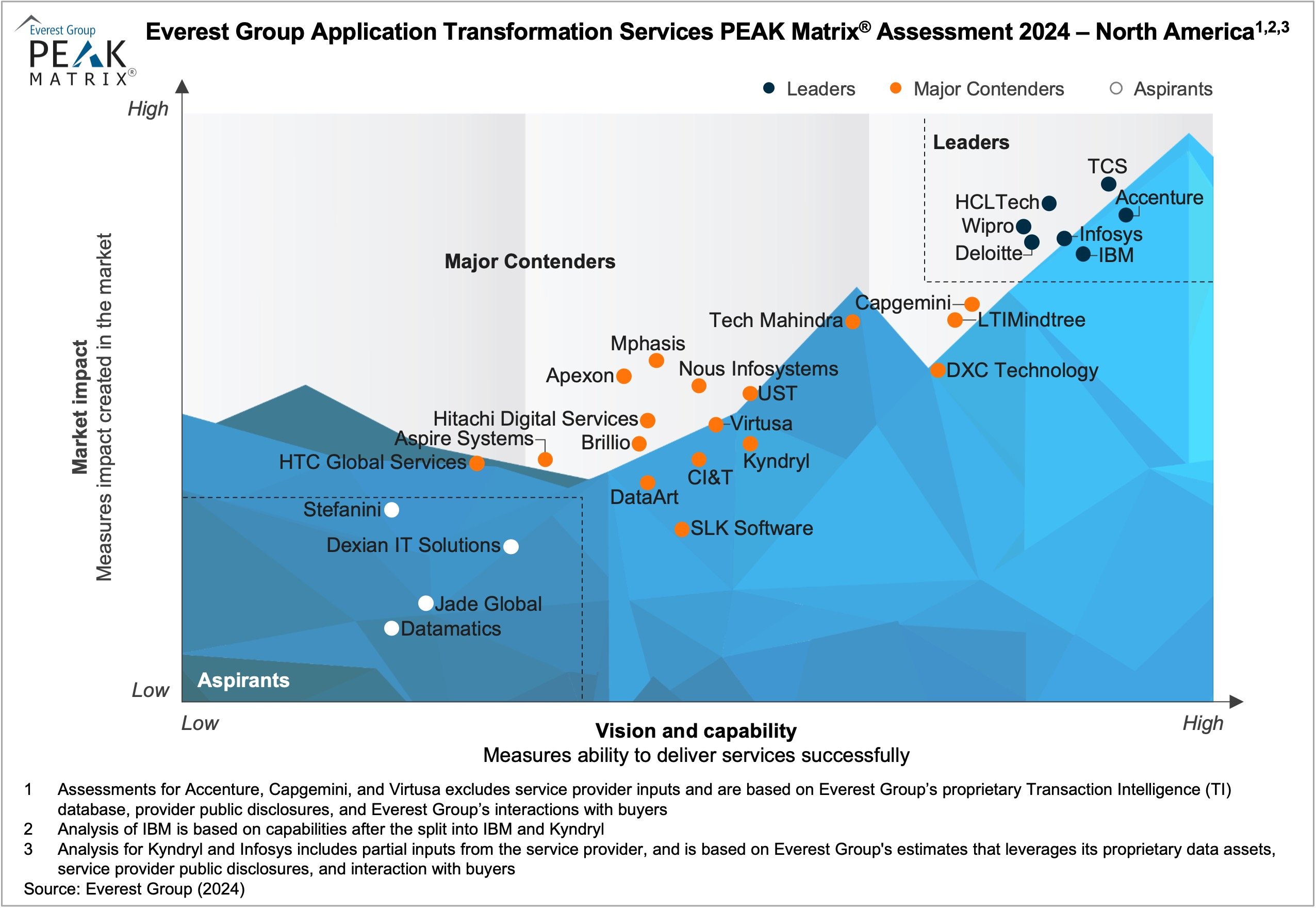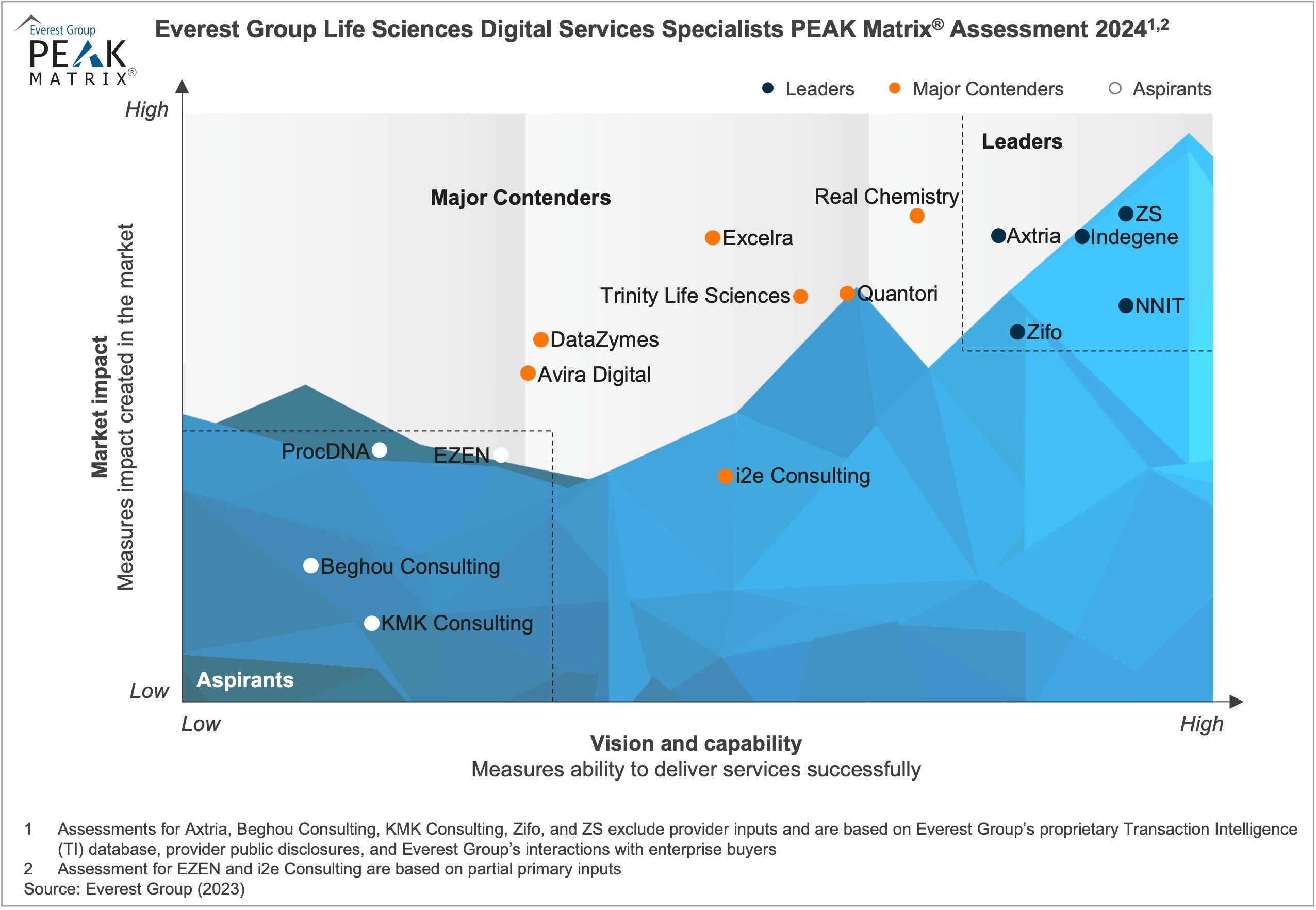The Use of Experience-level Agreements (XLAs) in Employee Satisfaction | Market Insights™
Experience-level Agreements

Experience-level Agreements

As we enter 2024, enterprises are under immense pressure to optimize their budgets and uncover potential cost savings. Over the past three years, businesses across the globe have struggled to stay within their budgets. In 2021 and 2022, we saw a sharp increase in pricing, and then budgets were slashed in 2023.
We face a strong likelihood of an economic slowdown in 2024 and an uphill battle to deliver savings. Watch this webinar to learn current pricing trends and how enterprises can find greater value and lower costs in their outsourcing, cloud, and SaaS contracts in the new year.
What questions did the webinar answer for the participants?
Who should attend?
Recognizing the increasing demands of customers and business imperatives for meeting productivity mandates, enterprises are increasingly acknowledging the significance of application transformation. To unlock the full potential of emerging technologies, businesses are accelerating their application transformation journeys and migrating away from legacy estates. However, rising macroeconomic uncertainty and cost pressures have led to increased scrutiny of the business value realized from these transformation initiatives.
In response to these evolving expectations, providers are enhancing their offerings through strategic collaborations with technology and platform providers. Additionally, they are actively developing in-house solutions to not only enhance their service capabilities but also to address enterprises’ concerns on value realization. Notably, providers are investing in strengthening their transformation service portfolio by leveraging next-generation technology themes such as low-code/no-code and generative AI. These initiatives collectively enhance the efficiency and innovation potential of businesses to ensure sustainable growth and competitive positioning in their respective industries.

In this report, we examine:
Scope
The PEAK Matrix® provides an objective, data-driven assessment of service and technology providers based on their overall capability and market impact across different global services markets, classifying them into three categories: Leaders, Major Contenders, and Aspirants.
Price Benchmarking

Fundamentally, investing in digital technologies is the start of an unending journey with continuous change on not just the tech stack but also on business operations. Companies navigate the tech stack part of this journey through an ongoing series of sprints or projects. However, the business operations portion is often less well orchestrated; this slows progress, creates unnecessary friction, and reduces the progress toward the objectives and key results (OKRs) that the transformation aims to achieve.
Beyond consolidating the competitive networking market, Hewlett Packard Enterprise’s (HPE) planned acquisition of Juniper Networks can potentially unlock a distributed, hybrid, secure fabric to optimize today’s hybrid IT environment. Explore the projected benefits to both companies and market repercussions in this blog.
Reach out to learn more on this topic.
HPE’s announcement earlier this month of its plans to acquire Juniper Networks for approximately US$14 billion has mainly focused on the benefits HPE can gain, such as Artificial Intelligence (AI) capabilities, new business lines, and margin improvements. However, the deal has far greater potential and can significantly impact the hybrid IT environment. Let’s delve into this further.
Today’s businesses operate across a combination of on-premises infrastructure, public clouds, and edge computing resources. While this distributed hybrid model offers flexibility and scalability, it presents formidable challenges. Managing disparate technologies, ensuring seamless connectivity, and maintaining security across these diverse environments is a complex puzzle.
Cloud has already created a gamut of challenges for the networking and security industry, which both HPE and Juniper have struggled with. Yet, with the shift toward a distributed hybrid IT environment, a new growth story may emerge from these two infrastructure giants.
The HPE-Juniper merger holds the potential to simplify this landscape significantly. Bringing together HPE’s expertise in servers, storage, and edge computing with Juniper’s leadership in networking and security solutions can create a hybrid IT management powerhouse.
Here’s how this combined force could benefit both organizations:
While the potential benefits of the union are significant, there are also challenges to consider. Both companies have sizeable portfolios that overlap, especially in the networking segment. The strategy for prioritizing the network products between Juniper and HPE Aruba is unclear. Allocating the networking portfolio to Rami seems like a smart move, but how the internal sales and product will adapt to a combined market offering remains to be seen. Only time will tell if Antonio and Rami can make this merger work.
Competitors: With the consolidation, Cisco, Arista, and Extreme will have opportunities to target the existing Juniper and HPE accounts until the integration is fully operationalized. In the long term, price wars and another scaled competitor in the networking space could emerge. With the distributed world rising, competitors will need to enhance their offerings to provide an end-to-end intelligent, distributed, hybrid, and secure connectivity fabric.
Enterprises: Existing HPE and Juniper customers will benefit from the complementary portfolio. HPE clients can take advantage of the enhanced automation capabilities enabled by Mist offerings. For prospective clients, it also provides enterprises with increased bargaining power, having another significant provider in the market with comparable offerings.
Telecom service providers: If HPE continues to focus on its enterprise strategy, existing telecom customers of Juniper might lose out on possible innovations and receive less attention.
Channel partners: System integrators, resellers, and managed services providers may need to reexamine their strategies in light of the combined entity and prepare for contingencies if support is reduced.
Despite these challenges, the HPE-Juniper acquisition will significantly impact the market. If poorly executed, it might end up being a consolidation exercise. However, if well executed, it has the potential to ignite an often overlooked but mammoth market segment.
To discuss further, contact [email protected] and [email protected].
Look into our webinar, The Generative AI Odyssey: A Year in Review and What’s Ahead in 2024, to explore the hype vs. reality of generative AI, showcase actual production-level use cases, address challenges head-on, and provide a glimpse into the future of this transformative technology as we move into 2024.
By leveraging generative Artificial Intelligence (gen AI), brands can elevate influencer marketing to the next level by creating compelling content that connects more deeply with consumers. In this blog, discover how AI influencers are changing the influencer marketing market and key factors brands should consider.
In an increasingly digital world, consumers seek personalized connections and are drawn to influencers who embody relatable lifestyles and offer trustworthy recommendations. Brands recognize the potential of influencer marketing to enhance visibility, credibility, and engagement. Influencer marketing fosters genuine connections that resonate with today’s consumers and provides brands with a powerful platform to amplify their message in the crowded digital marketplace.
Let’s take a look at how consumers and brands perceive influencer marketing.

Quick cut to the gen AI disruption – where cutting-edge technology meets influencer creativity. With its capability to produce creative text formats, images, and videos, gen AI brings a new opportunity to this market. It has the potential to empower influencers to craft compelling content at scale that uniquely resonates with followers.
Influencers now find themselves equipped with innovative means to captivate audiences, experiment with storytelling formats, and consistently produce engaging content that reflects the pulse of their followers.
Callout: “A survey of consumers across the UK and the US found a majority (60 percent) prefer creator content designed using gen AI. An additional poll of content creators found most (81 percent) reported more favorable audience engagement with content designed using AI technology.”
Let’s look deeper at how gen AI is being used in influencer marketing.

The use of AI influencers in marketing is a relatively recent development that has gained significant traction. High-profile brands such as Prada, Versace, Red Bull, and Tinder have all activated AI influencers for social media promotions. Although the results driven by AI influencers are similar to those of human creators, the key difference lies in creating a relatable brand presence in consumers’ minds.
In the graphic below, we compare the skill levels of human and AI influencers in important areas:

With their complementing skills, virtual and human influencers can create engaging content at different ends of the same spectrum. As gen AI becomes more prevalent in the influencer industry, balancing authenticity and AI-generated content will be crucial to maintaining genuine connections.
While the intersection of gen AI and influencer marketing presents a transformative landscape for brands to connect with their target audience, a few areas of concern still need to be addressed, including:
As influencer marketing evolves, the future is oriented toward adopting an omnichannel and full-funnel strategy. This entails brands leveraging influencer content across diverse marketing channels, from connected television (CTV) ads to opportunity-to-hear (OTH) display ads. By taking this approach, brands can establish influencer-led paid media and integrate it with commerce, removing steps in the customer journey and ultimately driving faster conversions.
To discuss the growing role of AI influencers in the influencer marketing market, contact [email protected] and [email protected].
Join our webinar, The Generative AI Advantage in Enterprise CXM Operations, to learn how enterprises are looking at generative AI-based solutions adoption to improve customer experiences.
Mexico has emerged as the new hotspot for customer experience management (CXM).
Everest Group said Mexico has a global services talent pool of nearly 197,000 full-time equivalents (FTEs). The workforce has strong multi-language capabilities in English, Spanish, French, and Portuguese. “The CXM market has been surging in Mexico, and the IT-ADM sector is showing notable growth as well, particularly as it taps into highly skilled engineers emerging from Mexican universities,” said Parul Jain, Vice President of the global sourcing team at Everest Group.
As life sciences enterprises adapt to the post-pandemic market, global macroeconomic uncertainties and geopolitical disruptions are compelling biopharmaceutical and medical devices enterprises to rethink their future growth strategy. These enterprises are rationalizing and restructuring their portfolios, strategically addressing high-priority quick-wins use cases for digital transformation, and actively seeking providers with greater domain knowledge, enhanced agility, and life sciences-specific technical expertise. Niche providers are emerging in the post-pandemic era and are establishing a strong presence in the digital services market.

In this report, we closely examine the life sciences digital services specialists state of the market while focusing on the following aspects:
Scope
The PEAK Matrix® provides an objective, data-driven assessment of service and technology providers based on their overall capability and market impact across different global services markets, classifying them into three categories: Leaders, Major Contenders, and Aspirants.
IT-ADM Services


©2023 Everest Global, Inc. Privacy Notice Terms of Use Do Not Sell My Information
"*" indicates required fields